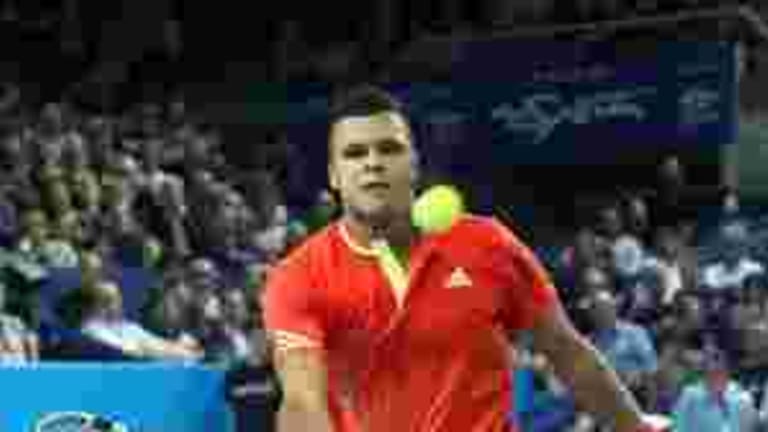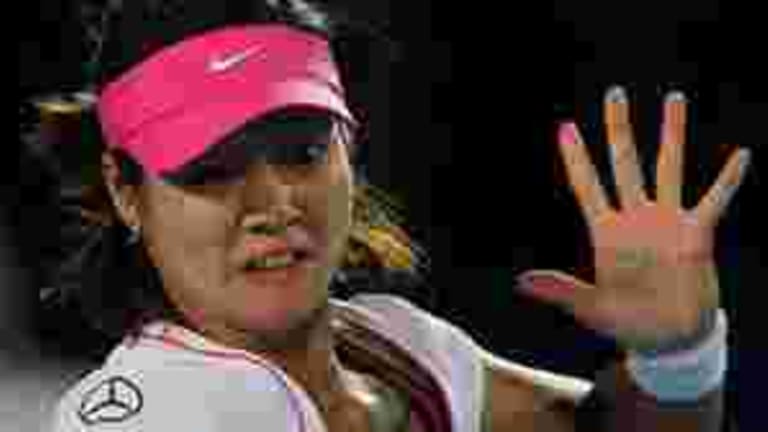LI NA (WTA NO. 6): For all her charm and the terrific story she’s crafted as the first Asian Grand Slam singles champion, Li has often puzzled and sometimes infuriated us with her peek-a-boo inclinations.
Tough to read, not least because of the formidable language barrier, Li is apparently given to huge swings of motivation and mood. It’s a comment on both her talent as well as her inconstancy that she’s won a grand total of just seven tournaments, though one was of course a major (the 2011 French Open).
Li is 31 years old and knows time is running out. Although she’s accomplished an enormous amount—her impact on the game probably has been disproportionate to her success—she knows that there’s a qualitative difference between one-time Grand Slam champions and those who have won multiple major titles.
Li says she’s worked intensively in the off-season with her new coach, Carlos Rodriguez, who was Justine Henin’s former mentor. She also declared, “I really want to be Top 3 or win another Grand Slam.” Given that the hard courts in Melbourne are ideal for her precise, flat game, and that Li has been in the Australian Open final before—she came very close to knocking off Kim Clijsters in 2011, despite being conspicuously overwhelmed by the occasion—there’s no better time for her than now.
JO-WILFRIED TSONGA (ATP NO. 8): It may not seem particularly imaginative to have the world Nos. 7 and 8 on this list (why not throw in No. 6 Berdych, or No. 5 Ferrer while I’m at it?). But the fact is that Tsonga has a more urgent and conspicuous need than either of those other two men—for two good reasons.
First, Tsonga has shown that he can win on the rubberized hard courts in Melbourne Park. He rocketed to fame in 2008 when he made it all the way to the final despite being unseeded, and hindsight tells us he can’t be blamed for having lost to his fellow first-time finalist Djokovic. Who at the time thought that Tsonga wouldn’t reach a Grand Slam final in the next four years?
Second, Tsonga’s career has been plagued by injury. In fact, he tweaked a hamstring at the Hopman Cup last week in Perth and subsequently withdrew from this week’s tournament in Sydney. But he still expects to play in the main event next week. At 27, time is running out, and he can do better.
PETRA KVITOVA (WTA NO. 8): There may be no player who needs to stop the bleeding more than Kvitova, who just can’t seem to get her game and confidence working together, not since achieving overnight stardom when she won Wimbledon as a 21-year-old in 2011.
Kvitova has always been error-prone, capable of losing the plot and playing cringe-inducing tennis for long periods. That basic lack of consistency, combined with the pressure she faces as a Grand Slam champ, seems to have been her undoing. Already, she’s been beaten twice in 2013, in Brisbane by Anastasia Pavlyuchenkova and in Sydney by Dominika Cibulkova.
I can understand the “sophomore slump” of 2012, but sheesh. . .
The ray of hope is that Kvitova’s big, lefty game can be lethal on these courts—her kick serve especially benefits from the high bounce—as she demonstrated when she made the semis last year and lost a tight three-setter to Maria Sharapova. It’s funny, but at that time, Kvitova was one or two wins awat from the world No. 1 ranking. Now No. 8, she’s not even in the conversation. Call hers a chance for redemption.
CAROLINE WOZNIACKI (WTA NO. 10): You’ve got to hand it to Caro, she’s one cool customer. She’s handled her fall from grace with extraordinary aplomb—or maybe she’s perfectly happy as a certified celebrity, high-earner, and Serena Williams impersonator with a cool boyfriend (golfer Rory McIlroy).
Who needs a Grand Slam title anyway?
At this time last year, the two-time year-end No. 1 was in the thick of a battle to hold onto her top ranking (see Kvitova). Since then, she’s plummeted dramatically instead of closing the deal by winning a major. Life is good for Wozniacki, but it’s hard to stand still. If she feels a need to reverse her slide, Melbourne would be a good place to start: The only time she lost there to a player who isn’t a Grand Slam champion was in 2009, to Jelena Dokic.

